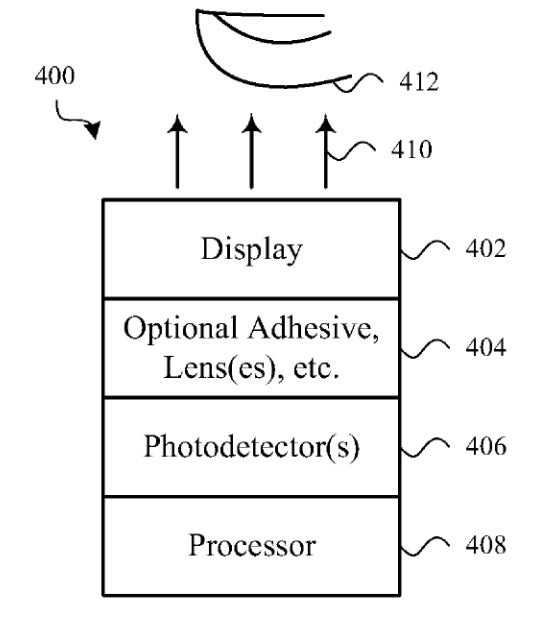Apple patent application hints at radical change for Face ID and Touch ID

Imagine an Apple iPhone that features an in-display version of Touch ID and Face ID. Sounds pretty cool, right? According to a new patent application, Apple is currently working on making this possible. The patent application is titled "Photodetectors Integrated into Thin-Film Transistor Backplanes" and was submitted by the manufacturer to the U.S. Patent and Trademark Office (USPTO). The patent application revolves around placing sensors such as cameras, depth sensors, biometric sensors and others behind display cameras, depth sensors, and so on.
Apple patent application shows how the company might handle in-display Face- ID
In the patent application, Apple inadvertently reveals which of its devices could receive in-display sensors. As Apple explains, "Sensors are included in many of today's electronic devices, including electronic devices such as smartphones, computers (e.g., tablet computers or laptop computers), wearable electronic devices (e.g., electronic watches, smart watches, or health monitors), game controllers, navigation systems (e.g., vehicle navigation systems or robot navigation systems), and so on." Thus, this technology appears earmarked for the iPhone, iPad, and Apple Watch.

Illustration from Apple's patent focused on in-display sensors
The in-display sensors can handle a variety of tasks. They can sense the presence of certain objects, measure the distance to certain objects, how close they are, and when they start moving. They can also produce a 2D image, a 3D depth map or a video. Recall that Face ID uses the creation of a 3D map of a user's face to unlock an iPhone. And if that isn't enough to convince you that Apple is working on an in-display version of Face ID, perhaps this line from the patent application will: "the array of photodetectors... may be configured to operate as a front-facing camera, a bio-authentication sensor, or a facial recognition sensor." Apple says that this can be achieved "alone or in combination with other sensors." The same technology could be used by Apple to offer an in-display version of Touch ID.
By moving these sensors under the display, Apple would be able to eliminate the notch on future iterations of the iPhone. In addition, Apple could also reduce the size of the bezels on the iPhone and iPad. And the tech giant might even decide to include Face ID and Touch ID under the display of the same device; there are times when Face ID doesn't work when iPhone users wish that they had Touch ID back. In a similar vein, the patent application says that the technology described in the patent could be used to collect biometric information such as "fingerprints, palm-prints, 3D face scans, or retina scans." This data could be used to identify or authenticate a user.
Apple filed the patent application on July 31, 2020 and the U.S. Patent and Trade Office (USPTO) published it today.
Follow us on Google News














Things that are NOT allowed:
To help keep our community safe and free from spam, we apply temporary limits to newly created accounts: